The Intel FPGA PAC D5005 is set to be the company’s high-end card for drop-in acceleration complete with a Stratix 10 FPGA onboard. When it comes to FPGAs, flexibility is great, but the lack of pre-packaged general-purpose solutions has stunted growth in many markets. There is a large market segment that does not want to define things such as memory controllers and which package pins will be used for PCIe interfaces. Intel (and Xilinx) have realized this, and are now offering solutions, like the Intel PAC D5005 that make FPGAs drop-in cards for servers, as GPUs have been for some time.
Intel FPGA PAC D5005 Overview
The card overall is a full height, 3/4 length double-slot, PCIe Gen3 x16 device carrying a 215W TDP. It, therefore, needs additional power via the server.
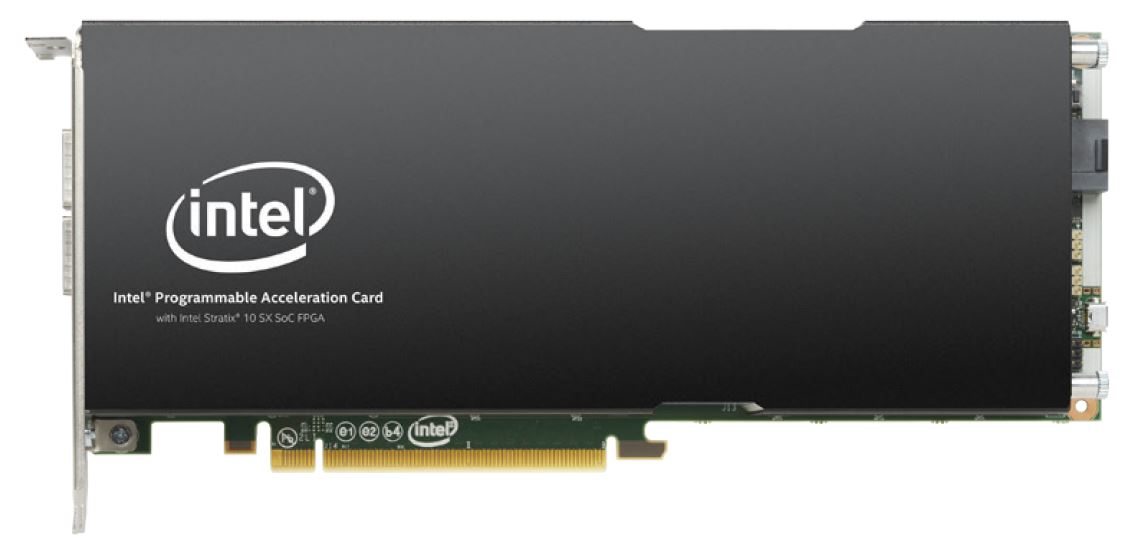
Also on the devices are two QSFP28 transceivers and 32GB of DDR4 ECC memory. The Intel MAX 10 FPGA BMC supports IPMI 2.0 and out-of-band management of the solution.
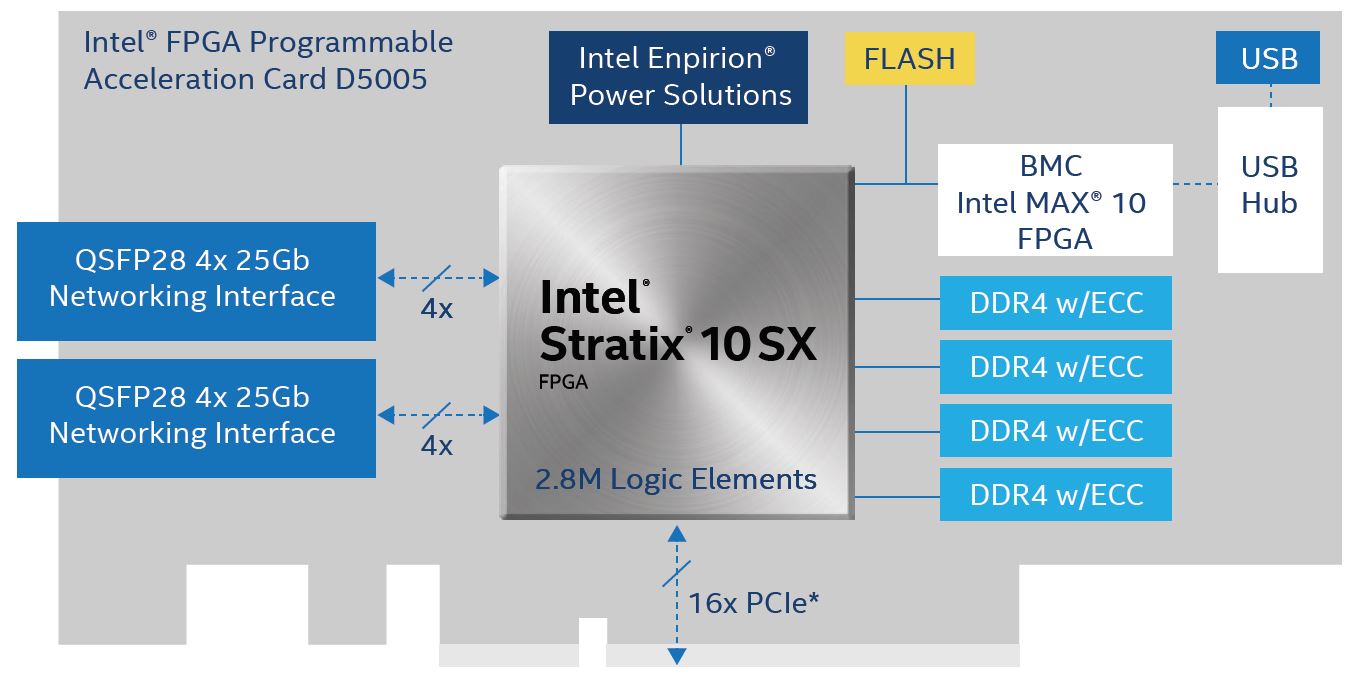
At the center of the design is an Intel SX280HN2F43E2VG FPGA. A few bits from that product number mean that there are 2.8M logic elements, it is a 42.5×42.5mm package rated for 0-100C operation. It also uses the company’s mid-speed fabric. The SX line also has a quad-core Arm A53 processor for management duties.
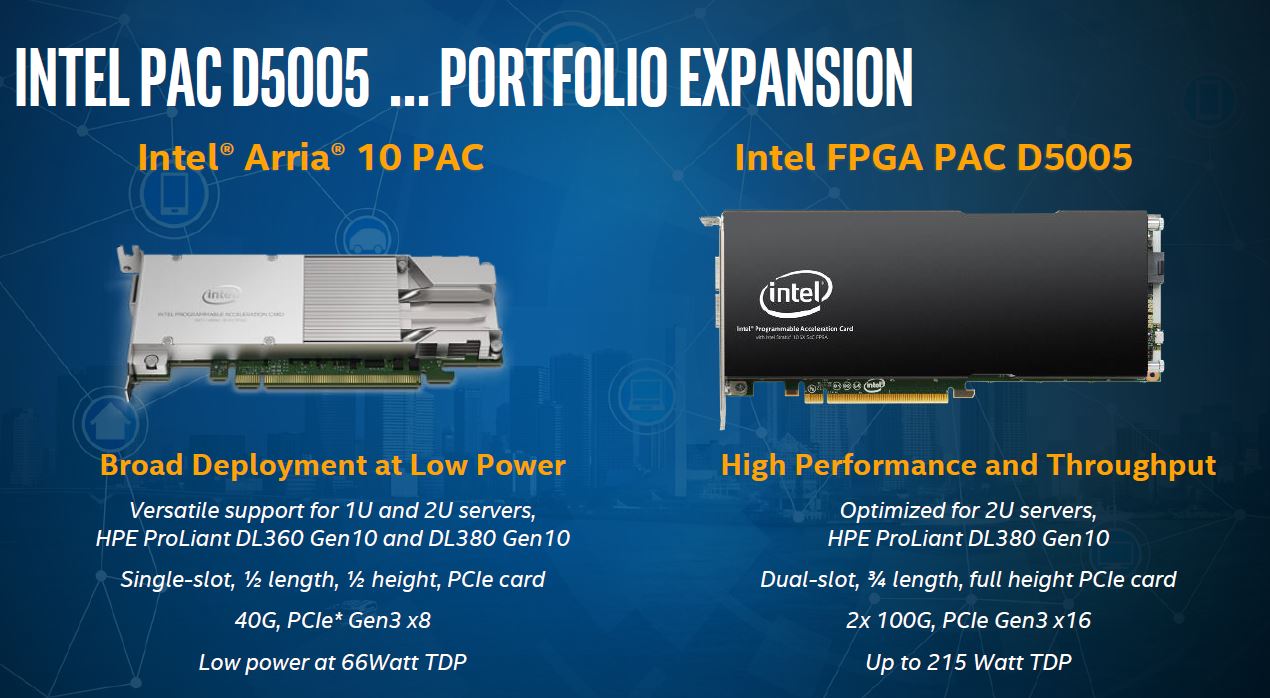
The idea with this card is to give users flexibility for deploying the card by setting some functionality out of the box. It is also a major spec upgrade over the Intel Arria 10 GX FPGA Card and Intel FPGA Programmable Acceleration Card N3000 for Networking as it has the company’s high-end FPGA.
Intel FPGA PAC D5005 Go-to-Market
By packaing the FPGA in a pre-defined solution like the Intel FPGA PAC D5005, the company makes it appealing to a host of new users and platforms. With this launch, HPE is Intel’s highlighted go-to-market partner. One can purchase HPE ProLiant DL380 Gen10 servers with the PAC D5005, Xeon CPUs, and HPE Scalable Persistent Memory with 16GB NVDIMMs. As a quick note, “Scalable Persistent Memory” is NVDIMM, not Intel Optane DCPMM.
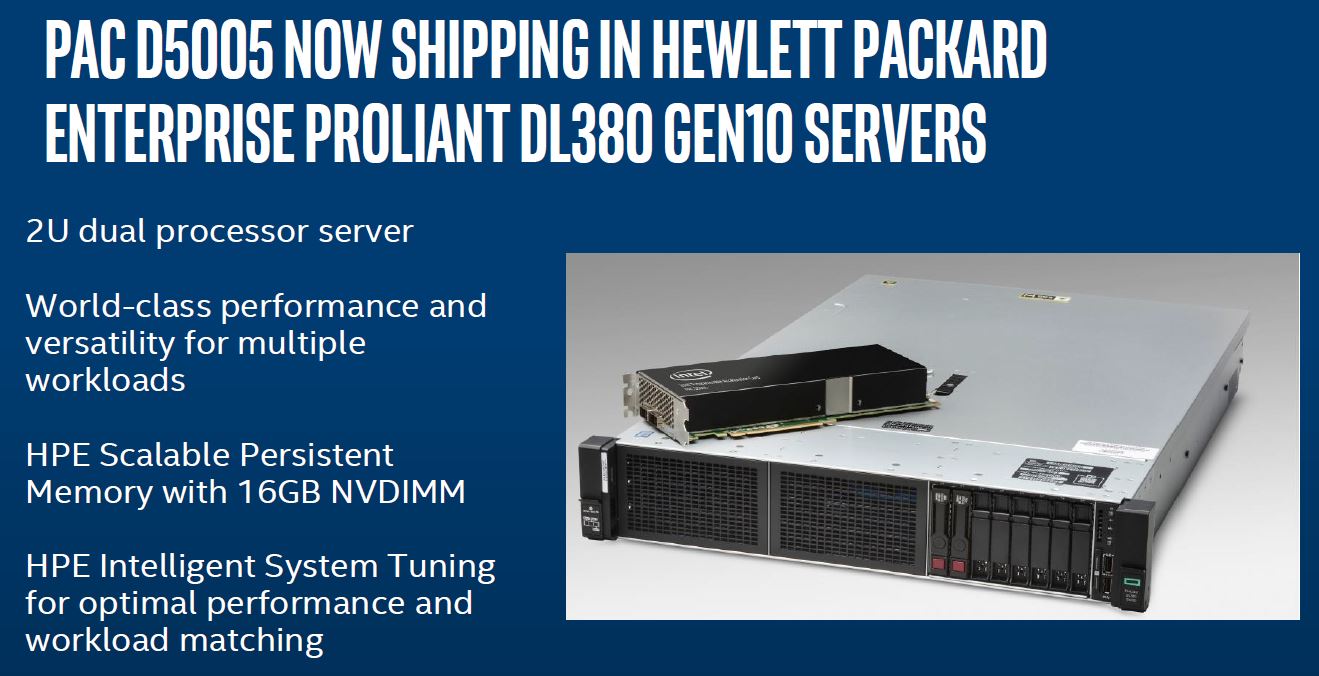
Beyond the IP for the physical packaging, and putting the cards into HPE servers, Intel is also making headway with tailored IP blocks for accelerating key customer workloads both through the work of Intel’s developers and through third parties. As a FPGA solution customers are also able to innovate and program logic to do key tasks, for example an optimized speech-to-text solution unique to that company.
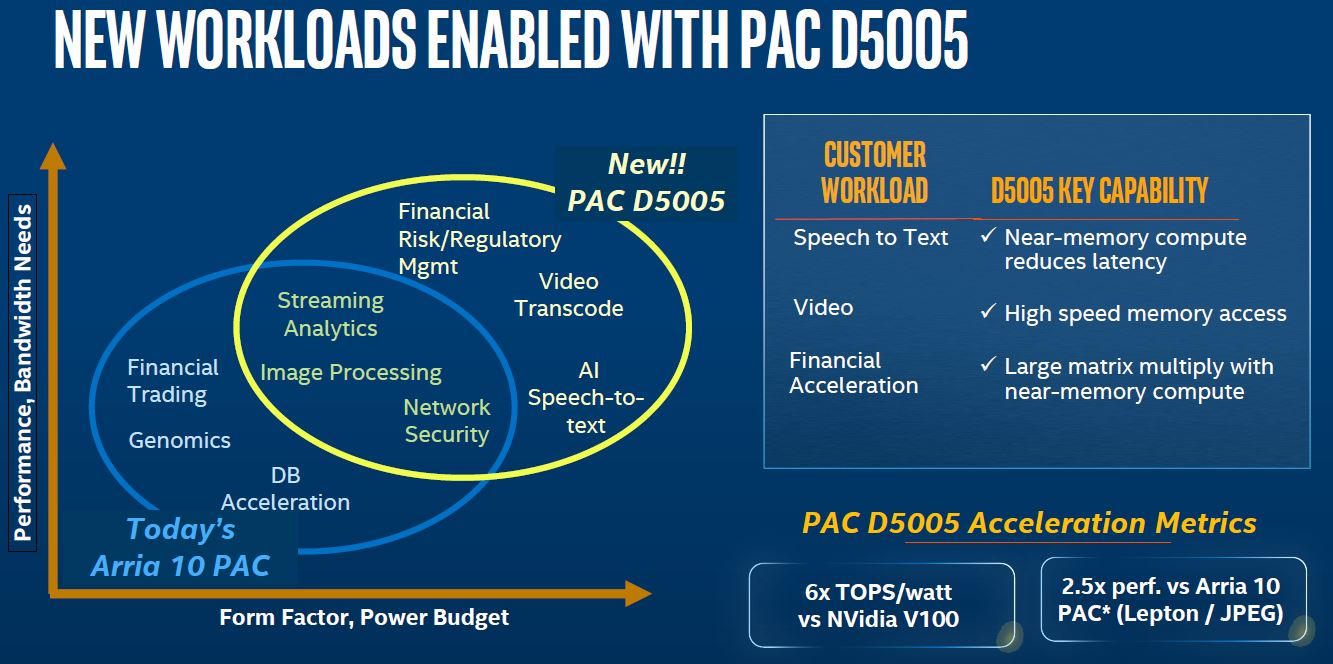
Adding a new card solution allows Intel to remove a packaging constraint versus GPUs and in many cases, FPGAs can be more efficient than GPUs due to customizable logic.
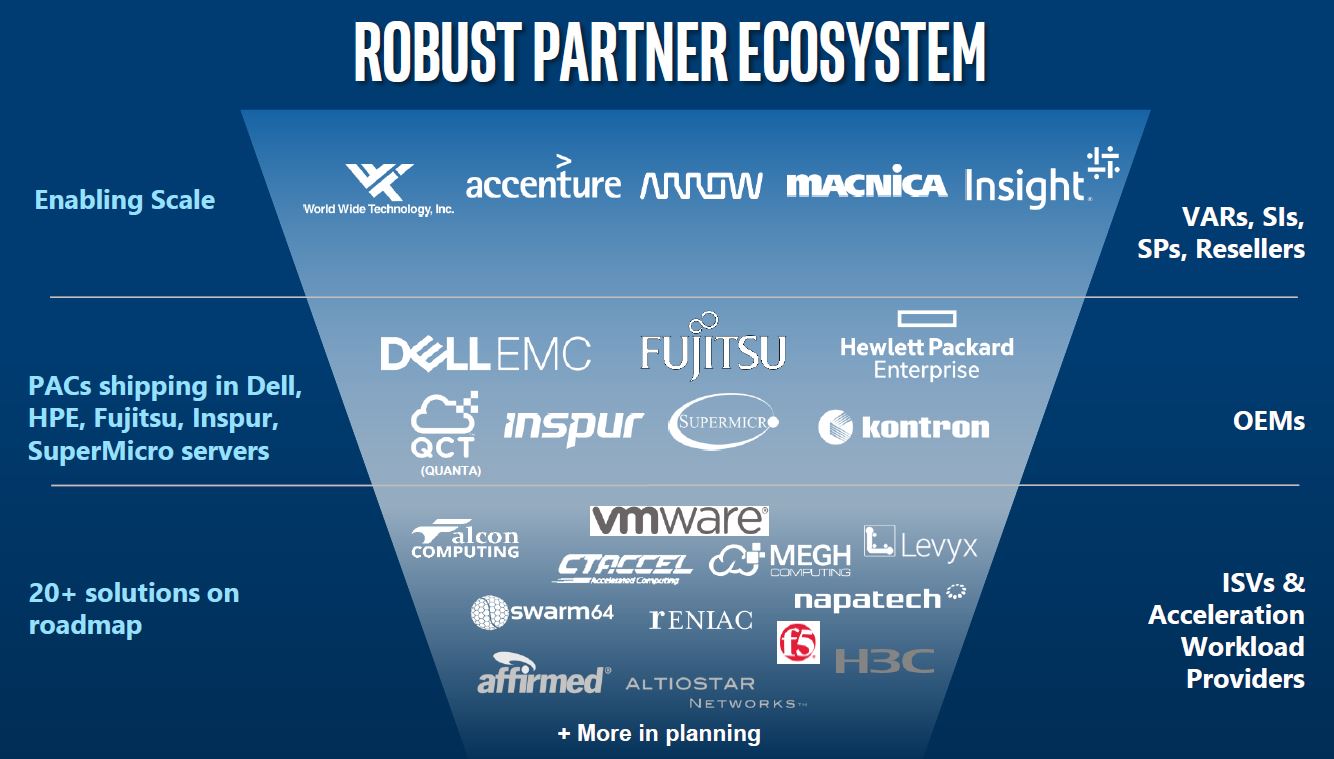
Aside from HPE, Intel has a number of partners putting FPGA cards into their solutions and there are a number of partners building solutions for specific workloads on Intel FPGAs.
Final Words
At STH, we believe this is one of the most important vectors FPGAs can take to gain more widespread adoption. Selling a higher-level platform allows Intel to access deployments that it could not have due to time-to-market constraints. It also helps enable a broader ecosystem. In my Intel Agilex Launched and Takeaways from a Discussion with Dan McNamara piece, we discussed a concept of a marketplace of ready-made solutions that can be deployed atop of FPGAs. At some point, in a microservices architecture, this means that we have FPGA accelerated microservices deployed on nodes with FPGAs and FPGAs that are programmed as a container starts to run a workload. That will be an enormous benefit for the adoption of FPGAs in the data center, and the PAC cards are a great step to make that happen.

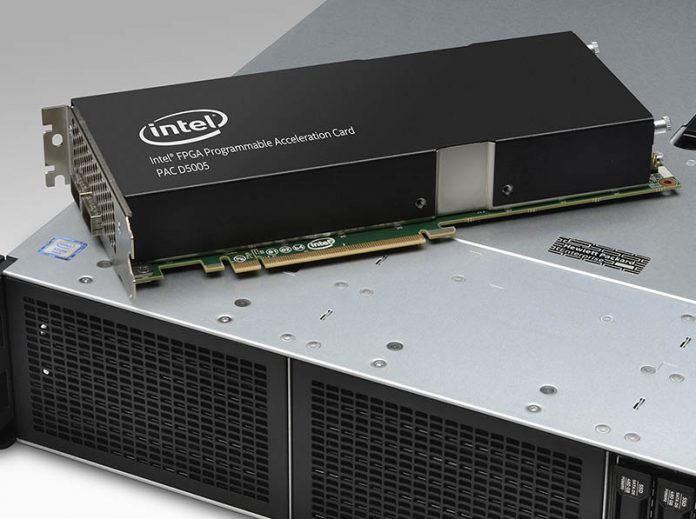



Any info on pricing?